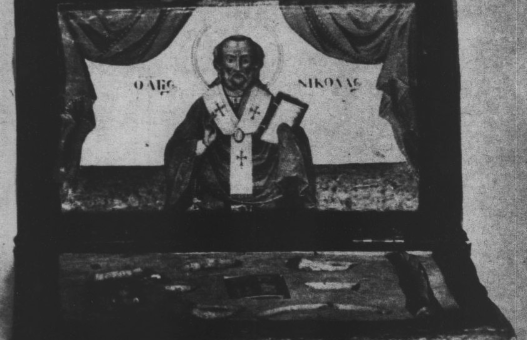
In this 1919 article, Saint Nicholas is posed as the origin of America’s Santa Claus. While researchers admit that there is no historical information about Saint Nicholas, there are numerous legends about the man that stem from the “cult” of the saint.
Santa Claus: American of Dutch Ancestry
Santa Claus, as most children and all grown-ups know, is a nickname for St. Nicholas.
And St. Nicholas was not a German saint – that will please all good Americans [NOTE: This article was published after World War I.]. The saint of children has not come to us from the people who so wantonly abused the children of France and Belgium.
When we call St. Nicholas “Santa Claus” we are merely saying in our own way “San Nicolaas,” as the people of Holland say it. For the Hollanders, who settled in New York and New Jersey 300 years ago at the very beginning of our country, brought San Nicolaas with them, and it was not long before Americans were saying “Santa Claus.”
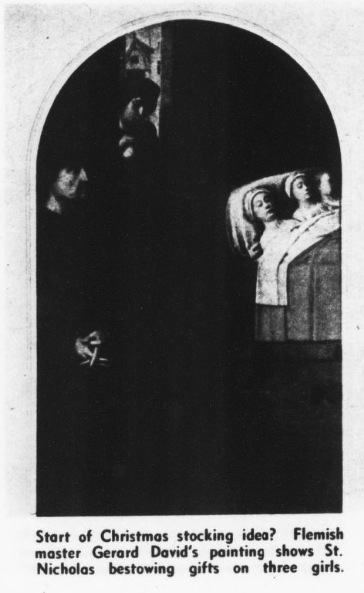
Saint Nicholas Belongs to the World
Why, St. Nicholas belongs to all the world!
Hundreds of churches in England bear his name.
There are more than a hundred St. Nicholas churches in Belgium.
Thousands of such churches are scattered all over Europe.
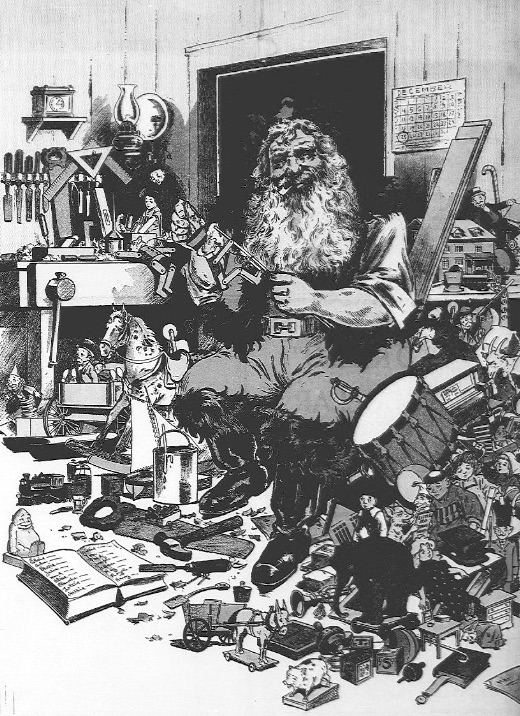
Born in Asia Minor
The queer thing about it is that St. Nicholas was really born in Asia Minor, in Panthera, in the province of Lycia, in the sixth century.
Saint Nicholas of Bari, he is oftenest called by Europeans, but only the bones of St. Nicholas reposing for eight centuries in the crypt of a handsome cathedral at Bari, Italy, have given him that title. He never lived in Bari.
Italian sea traders, who worshipped him as their especial protector, stole his body from its resting place in Myra in the 12th century and brought it to the Italian seaport. Since that time the celebration held there in the saint’s honor is unique.
The eastern world knew and loved him first, but it is from Western Europe that we learn of many of the quaint customs connected with the celebration of his birth.
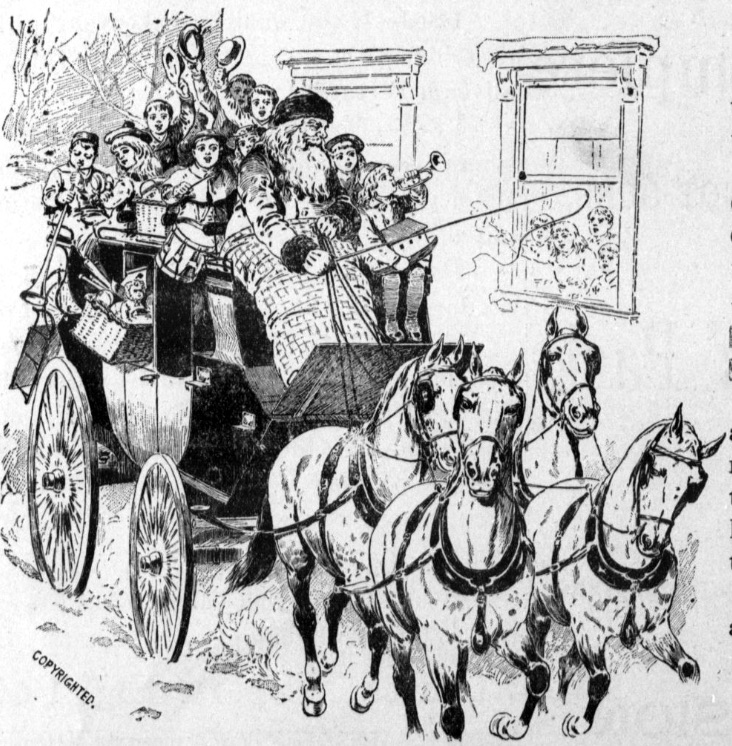
Giving to the Poor
In Lycia he lived to a good old age, filling his days even in childhood by doing good deeds and giving lavishly to the poor of the fortune he inherited.
It was Christlike to give, so, as a steward of God, his wealth belonged to God’s children, Nicholas believed.
Finally he was made bishop of Myra, where he went to live after a pilgrimage to the Holy Land.
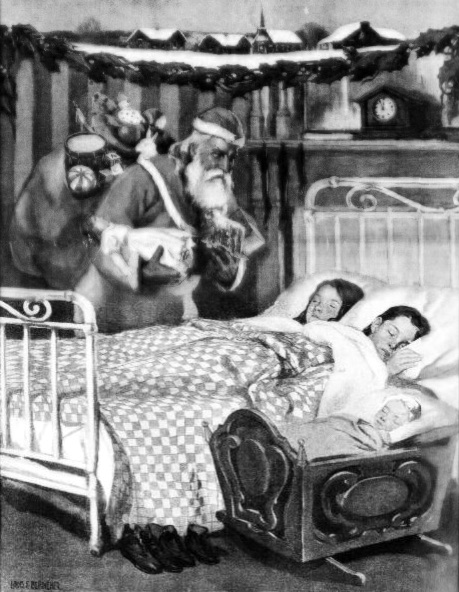
Saint
It was not strange that after such a life of charity he should become a saint of the common people, even as St. George was a saint of knighthood. He was invoked by the laborer toiling for his daily bread, by mariners, by merchants.
He was protector of the weak against the strong, the poor against the rich, the captive, the prisoner, the slave.
He was especial guardian of maidens, schoolboys, the orphan poor.
Throughout most of Europe children are taught to reverence him, and to believe if they are docile and attentive to their duties he will fill the cap or stocking with dainties; if they are naughty or idle, he certainly has a rod in pickle to bring along for them.
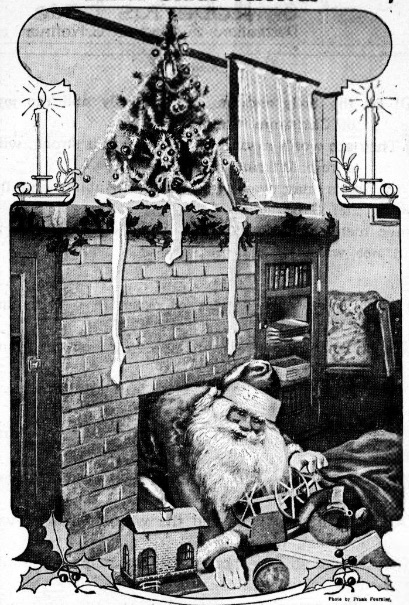
No Historical Record of Him
Here is what the Encyclopedia Britannica has to say about St. Nicholas:
St. Nicholas, bishop of Myra, in Lycia, a saint honored by the Greeks and the Latins on the sixth of December. His cult is as celebrated as his history is obscure. All the accounts that have come down to us are of a purely legendary character, and it is impossible to find any single incident confirmed historically.
“The main facts of his life are usually given as follows:
“He was bishop of Myra at the time of the Emperor Diocletian, was persecuted, tortured for the faith, and kept in prison until the more tolerant reign of Constantine, and was present at the council of Nicaea. It should be observed that this last circumstance is ignored by all historians and that St. Athanasius, who knew all the notable bishops of the period, never mentions Nicholas, bishop of Myra. The oldest known monument of the cult of St. Nicholas seems to be the Church of Sts. Phiscus and Nicholas built at Constantinople by the Emperor Justinian. In the West, the name of St. Nicholas appears in the ninth century martyrologies, and churches dedicated to him are to be found at the beginning of the eleventh century.
“It is more especially, however, from the time of the removal of his body to Bari, in Apulia, that his cult became popular. The inhabitants of Bari organized an expedition, seized his remains by means of a ruse, and transported them to Bari, where they were received in triumph on the ninth of May, 1087, and where the foundations were laid of a new basilica in his honor. This was the origin of a famous and still popular pilgrimage.
“There are nearly 400 churches in England dedicated to St. Nicholas. He is the patron saint of Russia; the special protector of children, scholars, merchants and sailors; and is invoked by travelers against robbers. In art St. Nicholas is represented with various attributes, being most commonly depicted with three children standing in a tub by his side. Of the various interpretations of this, none is absolutely certain. One explanation has been sought in the legend of St. Nicholas miraculously restoring to life three rich youths, who had been murdered, cut up, and concealed in a salting tub by a thievish innkeeper or butcher, in whose house they had taken lodging.
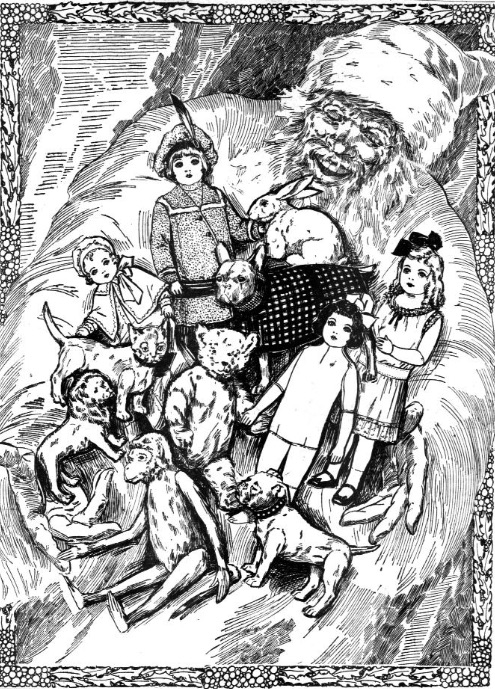
“A legend of his surreptitious bestowal of dowries upon the three daughters of an impoverished citizen is said to have originated the old custom of giving present in secret on the eve of St. Nicholas, subsequently transferred to Christmas Day. Hence the association of Christmas with ‘Santa Claus,’ and American corruption of the Dutch form, ‘San Nicolaas,’ the custom being brought to America by the early Dutch colonists.”
Source: The Clio messenger. (Clio, Mich.), 18 Dec. 1919.

